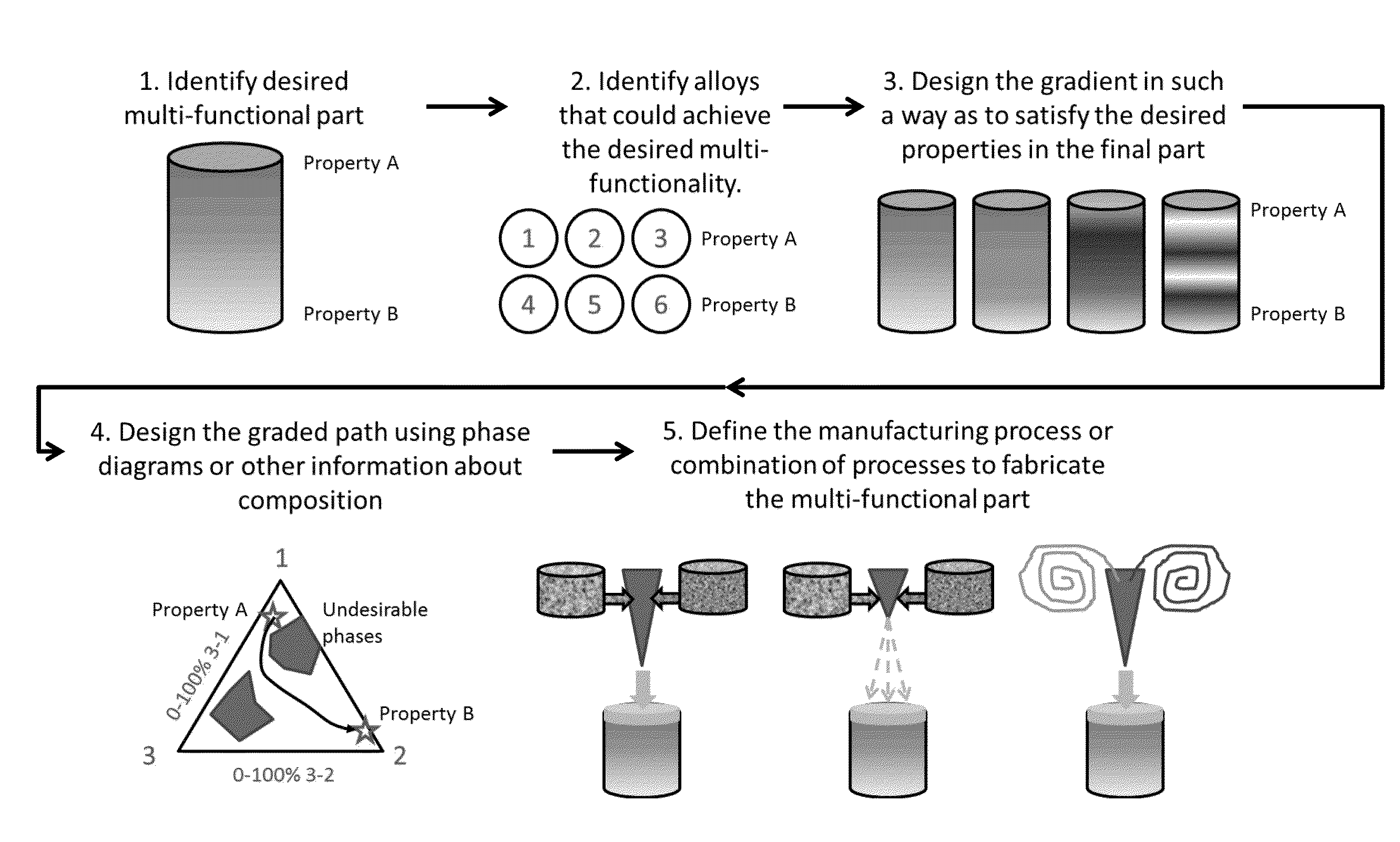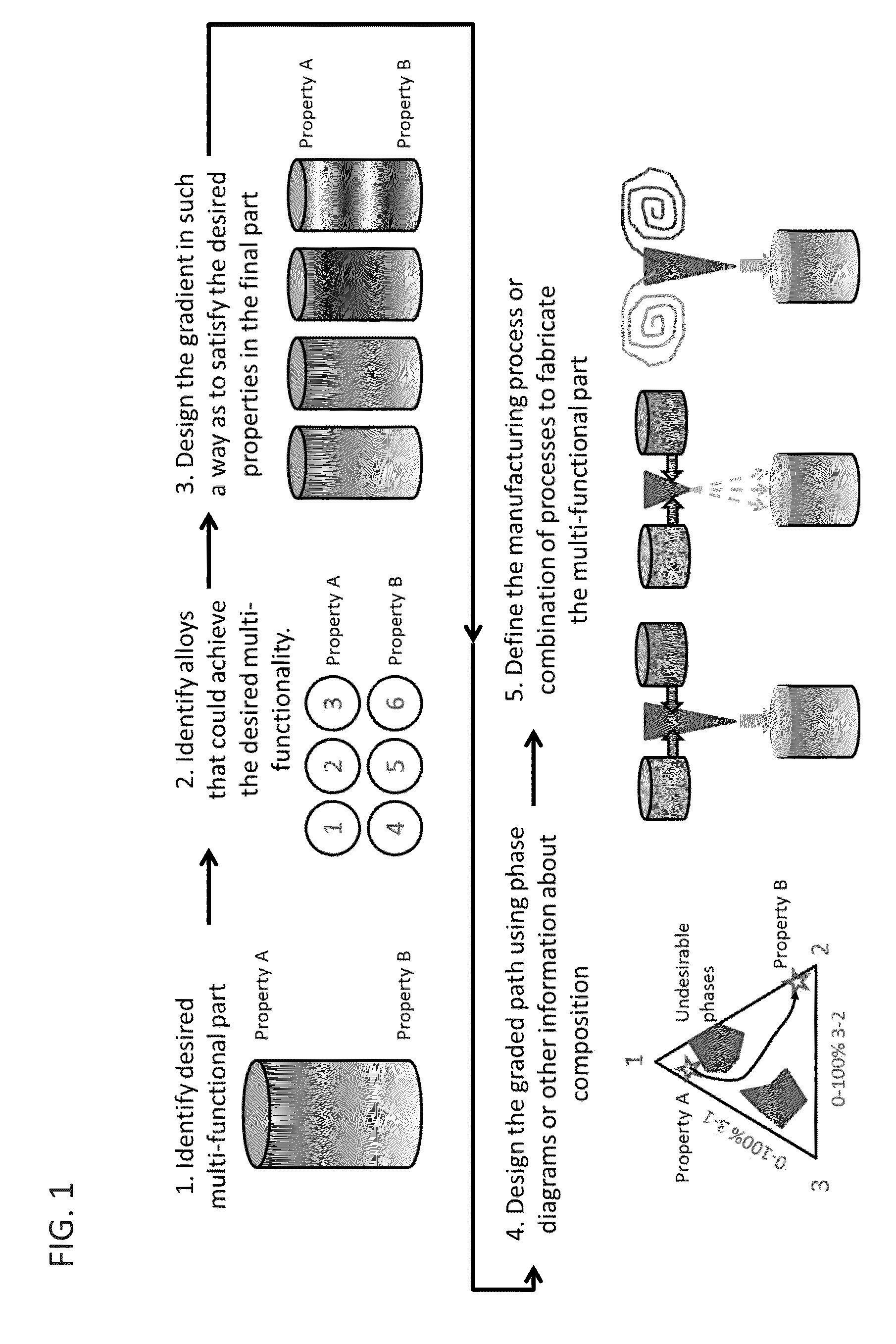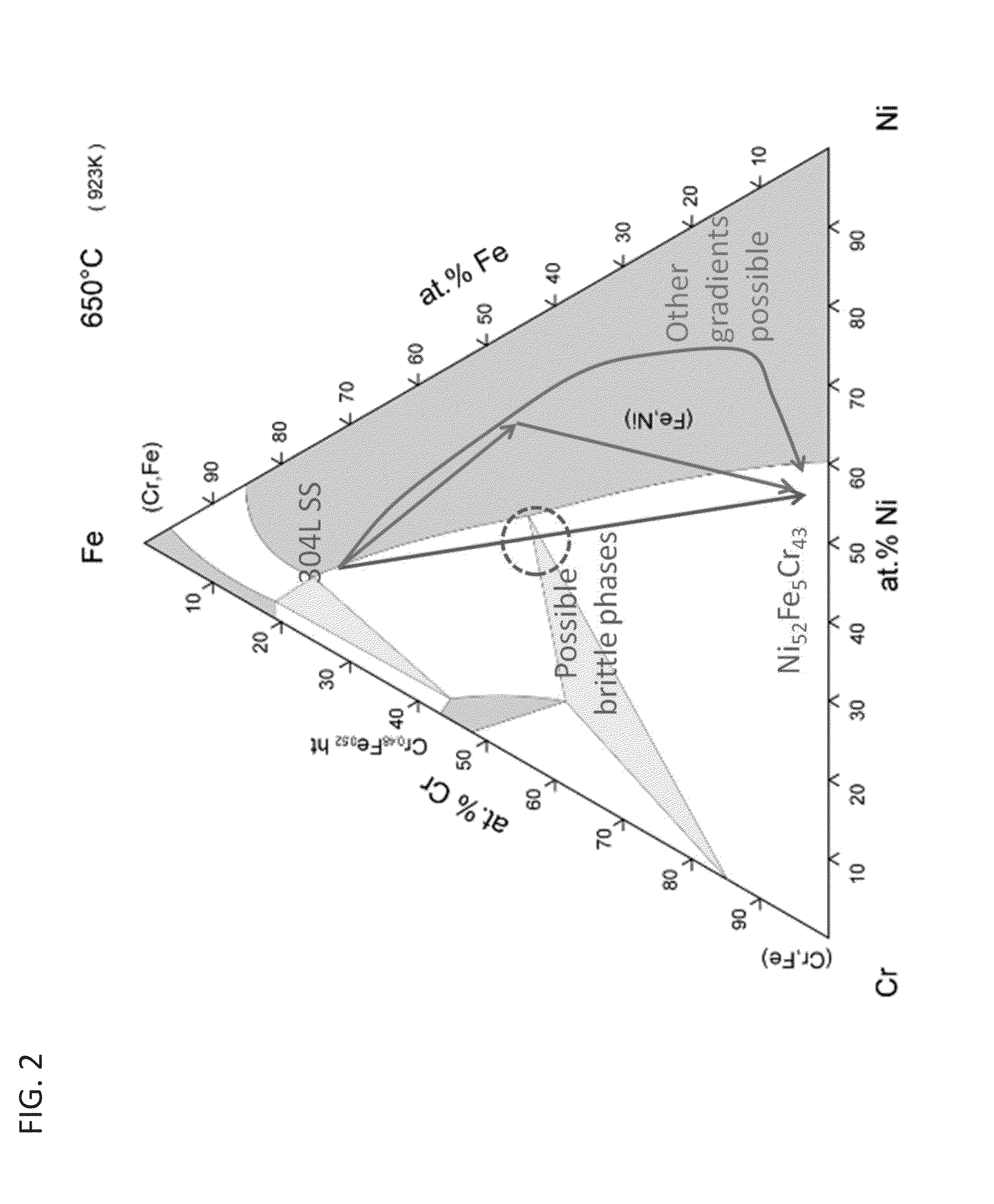Methods for fabricating gradient alloy articles with multi-functional properties
a technology of gradient alloy and composition, applied in the field of gradient alloy articles with multifunctional properties, can solve the problems of limited development of new metal alloys (a field called metallurgy), difficult to fabricate a piece of metal that has a gradient of compositions from one metal to another, and substantial limitations both as to the types of properties that can be modified and the materials that can undergo such modification. , to achieve the effect of increasing the deposition velocity of the layer
- Summary
- Abstract
- Description
- Claims
- Application Information
AI Technical Summary
Benefits of technology
Problems solved by technology
Method used
Image
Examples
example 1
Multi-Functional Optical Mounts
[0196]Nearly all JPL spacecraft (as well as satellites and high-flying aircraft) such as the Laser Interferometer Space Antenna (LISA) and some dark programs contain optical assemblies. These complex assemblies have high-precision requirements that necessitate the use of low coefficient of thermal expansion (CTE) materials (e.g. Invar) to support the actual optics (i.e. optics mount). The mount is often machined from a single piece of Invar (an Fe—Ni alloy which exhibits a near zero-CTE). Invar is a tough and ductile metal, but it is difficult to machine and has a density similar to steel.
[0197]In these applications, the Invar mount is typically supported by a “bench”. The bench is often machined from Al or Ti alloys, to reduce density, or from steel, for strength. These structures are generally assembled together using fasteners but, in some constructions, adhesives or brazes may be used to join the dissimilar metals. Due to the CTE mismatch between d...
example 2
Multi-Functional Optical Mirror
[0202]As shown in FIGS. 4a and 4b, using the same compositional gradient described in Example 1, above, a multi-functional multilayer optical mirror comprising a Invar 304L mirror and an isogrid backing was also formed, demonstrating that the multi-functional CTE system can be incorporated both into optical mounts, and directly into the optics themselves.
example 3
Multi-Functional Valve Stem
[0203]As shown in FIGS. 5a and 5b, in some embodiments the fabrication process may be used to form multi-functional multilayer valve stems. Again, in this embodiment the shape of the part is determined first (FIG. 5a, Step 1), followed by an identification of appropriate materials (Step 2) and the necessary distinct material regions (Step 3). In this case, the materials are a high temperature Inconel 625 (reduced composition of Ni58Cr20Fe5) alloy for the valve material, and a traditional 304L Stainless Steel stem material. Then a compositional gradient pathway is plotted between the two materials (Step 4). As shown, a straight-line path only barely avoids an embrittling region. Accordingly, in some embodiments a multi-step compositional gradient pathway (shown by the dashed line) that passes through an intermediate material stage may be used. Once the pathway is defined, the manufacturing technique is identified (FIG. 5a, Step 5), and the part fabricated. ...
PUM
| Property | Measurement | Unit |
|---|---|---|
| width | aaaaa | aaaaa |
| width | aaaaa | aaaaa |
| diameter | aaaaa | aaaaa |
Abstract
Description
Claims
Application Information
 Login to View More
Login to View More - R&D
- Intellectual Property
- Life Sciences
- Materials
- Tech Scout
- Unparalleled Data Quality
- Higher Quality Content
- 60% Fewer Hallucinations
Browse by: Latest US Patents, China's latest patents, Technical Efficacy Thesaurus, Application Domain, Technology Topic, Popular Technical Reports.
© 2025 PatSnap. All rights reserved.Legal|Privacy policy|Modern Slavery Act Transparency Statement|Sitemap|About US| Contact US: help@patsnap.com



